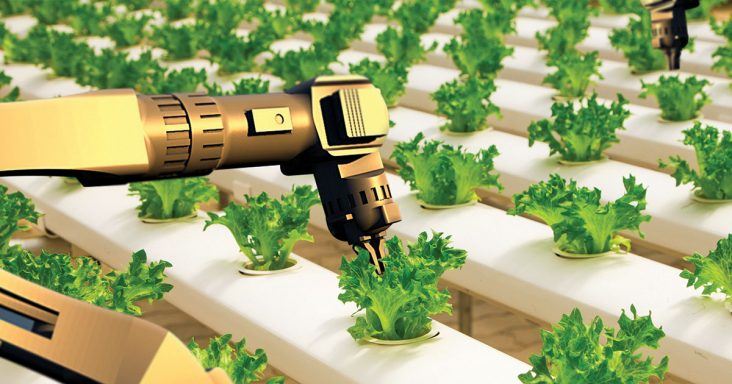Ag industry set to boom during the next century
by April 7, 2019 1:56 pm 3,009 views

The world’s rapidly growing population and the push of many people from the poverty ranks into the middle class will fuel significant growth in the agriculture industry, according to one leading expert in the field.
Randall Pope, the retired director and senior advisor at The Westchester Group, recently told a group of Arkansas State University business students that ag land will provide an excellent return on investment in the coming years.
The ASU alumnus graduated from the school in 1975, after he spent his youth on a farm in Bono. Prior to his work with Westchester starting in 1995, he spent 18 years with Prudential Insurance Company of America. During his tenure at Westchester, the asset and investment management company acquired 1.6 million acres of investment farmland and employs a staff of about 150 in 20 offices around the world. The company is headquartered in Chicago and has farmland assets in several spots around the world including Australia, Chile, eastern Europe and others.
“I once sat in the seats you guys are sitting in,” he said. “They were a little newer when I was here.”
The ag sector is one of the largest in the U.S., according to United States Department of Agriculture’s Economic Research Service. Agriculture, food, and related industry’s contribute $992 billion towards the country’s Gross Domestic Product, according to ERS. Farms alone directly contributed $136.7 billion towards GDP or roughly 1%. There were about 21.6 million jobs tied to the agricultural industry, or about 11% of the working population. Food manufacturing accounts for about 14% of all manufacturing jobs.
Pope told the group there have always been opportunities in agriculture, but those will grow in the coming years. During this century, the world will have to produce twice as much food as it does now. In 1800, there were less than 1 billion people worldwide and that number grew by 700 million by 1900. There are about 7 billion people around the globe now, and by the year 2100, that number will balloon to more than 10 billion people.
Each year, 160 million people across the world move from poverty status into the middle class, he said. That’s about half the U.S. population. Those joining the middle class are switching from a primarily rice-based diet to more protein-rich diets, he said. If you go to many urban areas in Southeast Asia, as an example, the lines to get into restaurants are never-ending. That was not the case even a decade ago, he added.
This population growth will have some negative consequences for American consumers, however. Throughout the country’s history, there has never been any real competition for food, which means the percentage of a person’s income used on food was relatively low as compared to many other parts of the world, Pope said.
About 50 years ago, the average American spent 17.5% of their income on food and ate at home 82% of the time. In 2018, the average American will spend about 10% of their income on food and will eat at home about 53% of the time, he said. As the middle class emerges across the globe, food will become a pricier commodity, he said.
“We’ve got to feed a growing world and a wealthier world,” he said. “We (in the ag industry) will be well-positioned.”
Investing in farmland is a process that started several decades ago. Up until the mid-1980s, banks and insurance companies controlled most of the wealth in the world, Pope said. A sea change happened when people started investing more in pension funds. Pension funds now control about $60 trillion in wealth, he said.
When the switch started, farming was a debt-intensive business. There were many farmland owners that wanted to get out of the business, but it was difficult because so much of those owners’ assets were tied to their land. Westchester began developing a farmland portfolio by providing equity capital to farmers, he said. The portfolio is worth $5.8 billion.
Besides demand and productivity issues, U.S. farmers will have other challenges moving forward, Pope said. A century ago, there were about 9 million farmers, and now there are 2.2 million, according to the U.S. Census Bureau. The average age of a farmer in this country is 57. Pope said he didn’t know how many farmers there will be in a hundred years, but he has a strong suspicion.
“I don’t have a clue how many there will be, but I suspect there will be fewer if the trend lines hold,” he said.
